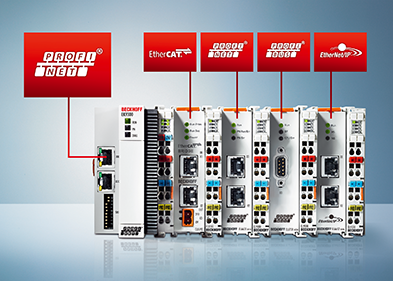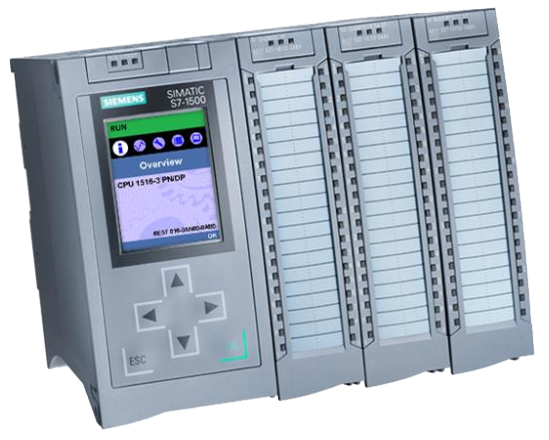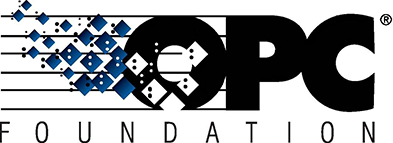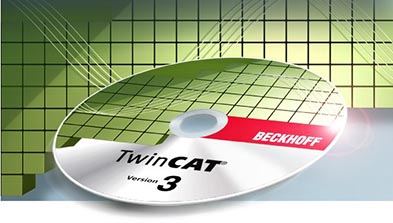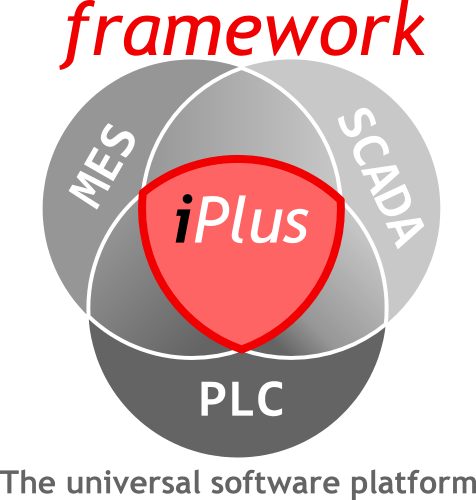
Welcome to gipSoft!
Empowering Industry with Open Source Innovation
At gipSoft, we are on a mission to restore autonomy and freedom in the industrial sector through our groundbreaking iPlus-framework. In a world increasingly dominated by proprietary systems and corporate control, we stand as a beacon of independence, offering a powerful open-source software platform that empowers businesses, integrators, and developers alike.
# Our Vision
We believe that the future of industry lies in open collaboration and shared innovation. Just as Linux revolutionized the software world, the iPlus framework is poised to transform industrial automation by providing a flexible, scalable, and efficient solution that breaks free from the constraints of traditional software models.
# Why Choose iPlus Framework?
For End Users: Whether you're in mechanical engineering or any manufacturing sector, our framework offers you the tools to regain control over your production processes. With iPlus, you can achieve seamless integration, optimize resource utilization, and maintain full ownership of your data and solutions.
For Integrators and Developers: Join us in building a sustainable, community-driven ecosystem. The iPlus framework is designed to facilitate collaboration across disciplines, enabling you to create and extend software solutions that meet the unique needs of your clients while maintaining updateability and flexibility.
# Our Unique Approach
As a small, financially independent company, we have developed the iPlus framework entirely on our own, positioning us uniquely to lead this liberation mission. Our platform combines classical programming with a low-code environment, offering a hybrid solution that supports both transaction-based and real-time, time-critical applications.
# Join the Movement
The success of our mission depends on the collective efforts of end users, integrators, and developers. We invite you to join us in this journey towards a more independent and sustainable industrial future. Together, we can create solutions that are not only innovative but also free from the limitations of proprietary systems.
# Support Our Mission
Your support is crucial. Whether by contributing to the framework or our MES, developing your own components, or simply spreading the word, every effort strengthens our community and brings us closer to achieving true industrial freedom.
What is the iplus-framework?
# The iplus-framework is a Low-Code software platform that combines database-based with object-oriented application development and its presentation layer. It functions as both development and runtime environment. Basically it is an extension of the .NET framework (NET 7) from Microsoft so that service-oriented client / server applications can be developed more easily, flexibly and quickly.
You can use it to develop
- transaction-based systems,
- SCADA applications,
- mobile solutions,
- time critical and scalable backend solutions (Multitier)
- machine controls with frontend
- Industrial Internet of Things application (IIoT) ...
with a uniform programming model. By "uniform" is meant that it makes no difference whether you develop a class for server-side or client-side use. A transaction-based form is programmed in the same way as a communication component or an automation object such as a motor or temperature sensor.
# You can also provide your solutions as software components, which other developers and project engineers can use to provide their end customers with an integrated overall solution. A project engineer does not have to have any programming skills, because he only has to orchestrate the components via drag & drop in the iplus development environment. Server-Side components runs also on Linux (for IIoT purposes).
This new approach enables a huge increase in productivity and an unprecedented ease of use and simplicity for developers, project engineers, consultants and end users.
Download iplus-framework letter!Architecture
# An object-oriented, component-based and service-oriented framework forms the core of iplus-framework. This means that all classes or components are only instantiated through the configuration in the database. There is no need to compile an entire system and direct references between assemblies are not necessary because instances communicate with each other via a neutral interface.
# The communication between the instances takes place either in the local memory space or distributed over many network nodes. The developer is completely freed from all network programming. Which instances run on which computer can only be set with a few mouse klicks in the iplus environment. This network-transparent approach enables unlimited scalability of the overall system. The integrated graphical workflowengine is also scalable. The system is completely event-driven in order to enable almost real-time processing and presentation.
# Just as the instances (model) are decoupled from each other, the presentation level (view) is also completely decoupled from the model and only saved in the database. The advantage of this approach is that other people who are not developers can adapt the UI during runtime to their needs without having any programming skills and to know how the deeper software levels work (e.g. network communication, database access ...) and that according to the WYSIWYG principle. This is also an enormous advantage for project engineers and consultants, because the customization can be carried out extremely quickly. With the iplus framework, you receive a SCADA system as a "by-product", which however, is much more powerful and flexible than the classic SCADA systems because it no longer makes a difference whether you want to design an motor, a communication driver, a workflow class or a transaction-based mask.
Unlimited expandability
# Microsoft Visual Studio® allows you to develop your own libraries set on the iplus-framework. There are only a few rules to comply with in order to set up so-called automation components. While doing so you can focus entirely on implementing your logic; other complexities such as networktransparent event processing, asynchronous method calls, access to databases, persistence of objectstatuses, remain hidden. This abstraction allows for a universal programming of all classes including, among others, transaction-based business objects, such as warehouse management components, automation objects, e.g. valves, engines, and communication objects, such as ERP connection, mail components, scanner. The same programming model is used for all classes and it is always easy to use!
# Minor project-specific customizations can be developed straight in the iplus development environment without the use of Microsoft Visual Studio®. The development environment consists mainly of a project configurator, a user interface designer, a workflow designer, and a code editor. Compiled classes from assemblies can be virtually extended by properties, methods, designs in the object-oriented sense. Therefore, it makes no difference whether you add properties to database tables (entity framework) or configure a class for plc-communication with process variables. This abstraction and standardization leads to better reusability and extensibility and a shorter training time in existing projects for other people.
# Since the iplus development environment is programmed with the iplus-framework, you can expand it as well and tailor it to the project requirements, build your own tools to speed up your day-to-day business and reduce your period of project development significantly.
Your solution
# How you use iplus-framework is completely free.
# Either you use the standard iplus frontend or you make your own product.
# You can also distribute your solution as a software component hosted on other iplus installations (Runtime). This is done purely by configuration in the iPlus development environment (orchestration) where components from other manufacturers are also integrated. Thus, your product runs together with other products on the same target system. In addition, your software components and components from other vendors can communicate with each other without having a direct DLL dependency.
# Regardless of whether you distribute it component-based or as your own end product, iplus includes an integrated license manager for the commercial use.
Update– und Upgrade
# iplus-framework also comes with a built-in package management system that helps you export your libraries, project configuration, designs etc. as update package. That enables you to provide your licensees with updates and to supply your customers with modifications tailored to their project requirements which you tested in advance on your own development system. It is even possible to transfer updates directly from one database to another.
# The concept of the loose coupling of components, enables iplus-framework updates, that we deliver, to be installed independently of your package updates.
# The iplus package management system is similar to the use of nuget, but with the main differences that
- the software components do not have to be linked together by a final compilation,
- that a software package can only be declarative (no .NET assemblies, only project configuration files and GUI description in XAML),
- the packages can be added during runtime (e.g. in a production system).
# This has the following advantages:
Different parties (project engineers, consultants, developers, teams) can work independently of one another on an overall solution.
For time-critical systems, the overall solution can sometimes even be expanded during productive operation. If a suitable time window is then available, the iplus-framework services can be restarted with the fully configured setting.
Integrated change request management: configurations that have been created on test systems (local computer, shared test system ...) can be transferred to the productive system via export / import.
GUI & SCADA
# The vector-based 2D-/3D user interface (WPF) is generated dynamically out of the database (XAML). Designs can be overwritten in order to suit the object orientation. The whole user interface, such as forms, controls, can be customized during runtime while still remaining updateable. What’s more, it is adaptive and adjusts to all screen resolutions. For mobiles we use MAUI.
# Hierarchical and consistent alarm system for all components. Unlimited alarm history and relationships with application data, e. g. production order, batch, material management …
# Logging process variables. Each property of any given instance can be logged event-based and displayed in a graph. Such graphs can plot both live and history data on various scales. The chart control offers many different setting and presentation options.
# FAQ: Desktop/Mobile vs. Browser?
What we often forget: The actual purpose of the browser is to transmit information to unkown users. And the actual purpose of cloud computing is load balancing and scalability when the number of users using Internet services unexpectedly increases. If you know the user - where is the problem starting a local App that connects to services via Internet/Intranet?
The argument of simple application delivery via cloud for enterprise applications versus on-premises is weak if the on-premise deployment is done well and easy without any installation (One-Click). And a MVC-pattern with different programming languages and complicated JS-frameworks on server and client side is not the right choice if you want to build applications for well-known users efficiently and timesaving. The MVVM pattern of clean separation of view and model is technically a much better solution. More about MVVM
Workflows
# ISA-S88 (DIN EN 61512).
# Graphic workflow-designer for programming all kinds of process sequences. This allows you to model your own business processes of any kind (e.g. production processes, logistic processes, machine controls...).
# Graphic program sequence history. All steps of a process that are performed on executing a workflow or batch are logged along with their parameters enabling you to view the audit trail as a Gantt chart in the log viewer. A comfortable and extensive search system assists users in spotting and improving process issues.
# Varied options for analysis and logging. In the object explorer (live-debugger) the object status of all instances can be visualized and controlled along with their settings on the server or client.
PLC
# OPC-UA, Modbus-TCP, RFC1006 (Simatic®) drivers.
# Converter and adapters All engineering offices use different ways of programming their PLC. We offer you the perfect means to adapt iplus-framework quickly and easily to the PLC model you’re using in order to reduce the period of project development significantly.
# Complete Beckhoff®-TwinCAT3®-Integration. Our iPlus automation component model has also been implemented in TwinCAT3®in order to allow you to represent your iPlus project almost one-to-one in TwinCAT®. The built-in Twin- CAT project synchronizer generates or synchronizes your whole iPlus-project with the TwinCAT® project. After the synchronization is complete you are only left to program the remaining project-specific logic. Using our special TwinCAT communication driver communication with all objects works plug-and-play and there will be nothing left for you to configure. The iPlus visualization is constantly being updated in the millisecond range owing to the event-based programming technology. With iPlus you can save 80% of the time that would be spent programming your PLC and 100% configuration time.
Additional features
# XAML-based graphical report generator. Reports can be generated from data bases as well as from the whole available object model using component live data, serializable objects etc.
# Multilingualism. As many languages as desired can be added. It allows you to translate functions as well as property -values of application tables.
# A group-based rights management system allows you to assign read and write access for all objects, properties and methods. What does this mean in concrete terms? No matter what type of class or component is registered in the iplus development environment, it is up to the rights management. Whether you want to administer a power-on command for a motor instance, a posting method in a warehouse management class, the property of an entity object (table field), or access to a process variable of a configured PLC driver - everything is consistent thanks to the abstraction of the iplus framework!
# Role-based online documentation system. Documentation can be represented and linked according to different roles.
# Corporate Design. You can adapt the style and design of iPlus to suit your design standards and your company’s Corporate Identity.
